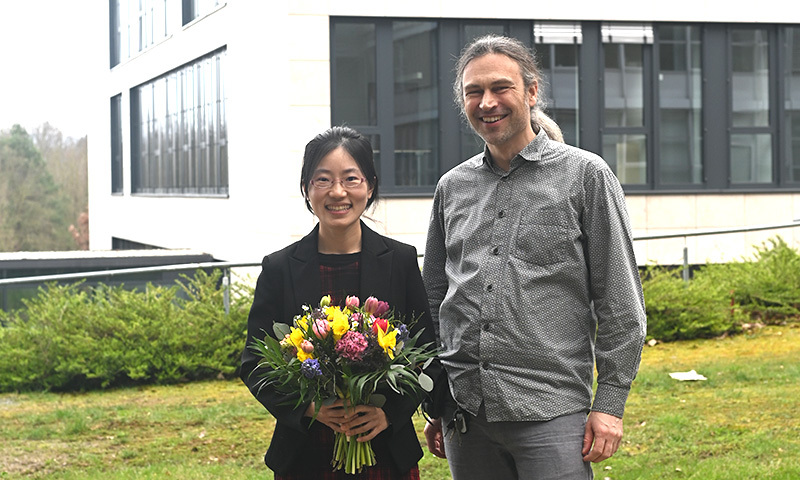News
Multitasking and multimedia - Fang Zhao received Venia Legendi
[10.06.2024]In her habilitation, Dr. Fang Zhao investigated how multitasking and multimedia affect learning. Her aim is to design learning environments for successful learning.
 Photo: Peter Cade/Stone/Getty Images
Photo: Peter Cade/Stone/Getty Images
Multitasking - working on several tasks at the same time - was long considered a special and desirable skill. Science now knows that there is no such thing as true multitasking and that it requires a lot of mental capacity. So what about multitasking in a learning context? And what happens when we switch between different tasks? CATALPA junior research group leader PD Dr. Fang Zhao is working on this, among other things, as part of her habilitation. The psychologist specializes in learning with the help of texts and images. The Faculty of Psychology awarded her the Venia Legendi. Zhao's habilitation consists of 17 peer-reviewed empirical studies (36 experiments) and is entitled: "A multitasking perspective on sequence representations and multimedia learning."
One after the other, not at the same time
 Foto: Privat
Foto: Privat"People can't really multitask," says Fang Zhao. "We have repeatedly shown in various experiments that interruptions or switching between tasks tie up cognitive capacity. Capacities that could otherwise be available for a task." For example, the researcher had people fold origami and set them another simple task at the same time. She wanted to know whether the sequential learning to fold an origami results in significant differences due to the distraction of a second task. "We were able to see that as soon as two tasks overlapped, the learning performance in folding the origami deteriorated," she summarizes. For learning scenarios, this means that it is better to solve tasks one after the other, especially when it comes to learning new skills.
However, performance and comprehension can also decline when tasks are stored one after the other. "We have found that task switching has a negative impact on learning performance," states Zhao. In "online learning settings, we showed learners graphics. The control group was shown the same types of diagrams throughout. In one group, the chart type changed from bar chart to tally chart at some point. Another group switched from horizontal to vertical bars. We noticed that the participants in the group in which we changed the chart from bar to tally made more mistakes and were slower. It takes a moment to adjust to the new system and uses up cognitive capacity."
Learning videos: Interviewer only distracts
Surprising, but valuable findings for the designers of educational videos: In one project, the researcher was able to show that it is better for learning i nterviews if you exclude the interviewer, for example by editing them out of the videos. Instead, the questions should only be shown. This way, learners are less distracted by another visual stimulus and learn better. This also applies to Zoom meetings or courses via Zoom. The video should only be on for the speaker and off for everyone else. This reduces distraction and promotes better learning.
Putting findings into practice
"Small and simple adjustments to the learning environment are often enough to make learning more successful," Fang Zhao concludes. "But how can this knowledge reach the right target groups? AI could help to make knowledge available to the right people in a direct and personalized way."

